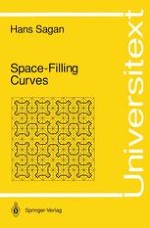
1994 | OriginalPaper | Buchkapitel
Introduction
verfasst von : Hans Sagan
Erschienen in: Space-Filling Curves
Verlag: Springer New York
Enthalten in: Professional Book Archive
Aktivieren Sie unsere intelligente Suche, um passende Fachinhalte oder Patente zu finden.
Wählen Sie Textabschnitte aus um mit Künstlicher Intelligenz passenden Patente zu finden. powered by
Markieren Sie Textabschnitte, um KI-gestützt weitere passende Inhalte zu finden. powered by
In 1878, George Cantor demonstrated that any two finite-dimensional smooth manifolds, no matter what their dimensions, have the same cardinality, and Mathematics has never been the same since. Cantor’s finding implies, in particular, that the interval [0,1] can be mapped bijectively onto the square [0,1]2. The question arose almost immediately whether or not such a mapping can possibly be continuous. In 1879, E. Netto put an end to such speculation by showing that such a bijective mapping is necessarily discontinuous. Suppose the condition of bijectivity were dropped, is it still possible to obtain a continuous surjective mapping from [0,1] onto [0,1]2? Since a continuous mapping from [0,1] (or any other interval, for that matter) into the plane (or space) was and, to a large extent, still is called a curve, the question may be rephrased as follows: Is there a curve that passes through every point of a two-dimensional region (such as, for example, [0,1]2) with positive Jordan content (area)? G. Peano settled this question once and for all in 1890 by constructing the first such curve. Curves with this property are now called space-filling curves or Peano curves. Further examples by D. Hilbert (in 1891), E.H. Moore (in 1900), H. Lebesgue (in 1904), W. Sierpiński (in 1912), G. Pólya (in 1913), and others followed. Around the turn of the century, when many of these curves were discovered, the term space was primarily used for the three-dimensional space, and these curves were called surface-filling curves, as is apparent from the titles of the early papers on the subject (“Abbildung einer Linie auf ein Flächenstück” = “mapping of a line onto a piece of a surface,” “Une courbe qui remplit une aire plane” = “A curve that fills a plane region,” or, more specifically, “O krzywych, wypolniajacych kwadrat” = “On curves that fill a square”).